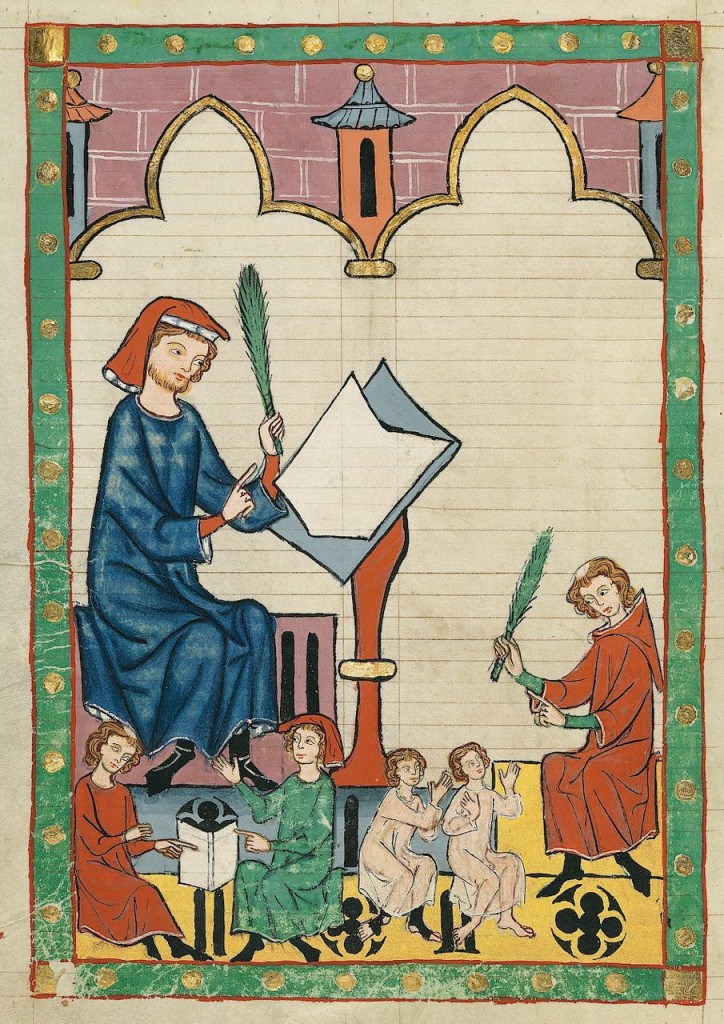 In this episode we continue with Eberhard the German’s Laborintus and learn how a teacher acquires the knowledge of grammar, along with getting some practical advice about inspiring medieval schoolchildren.
In this episode we continue with Eberhard the German’s Laborintus and learn how a teacher acquires the knowledge of grammar, along with getting some practical advice about inspiring medieval schoolchildren.
This episode’s texts:
- Eberhard the German. “The Laborintus of Eberhard: Rendered into English with Introduction and Notes.” Trans. Evelyn Carson. Diss. Cornell University, 1930.
- Nelson, William, ed. A Fifteenth Century Schoolbook. Oxford: Clarendon Press, 1956.
References:
- Orme, Nicholas. Medieval Schools: From Roman Britain to Renaissance England. New Haven: Yale UP, 2006.
- Parsons, Ben. “Whipping Boys: Attitudes Towards Beating in Medieval Pedagogy.” Education Journal 191 (24 Feb. 2014): 10.
- Thomas Aquinas. Commentary on Aristotle’s Metaphysics. Vol. 1. Trans. John P. Rowan. Chicago: Henry Regnery Company, 1961.
Image: Schoolmaster of Esslingen in Heidelberg, Universitätsbibliothek, Cod. Pal. germ. 848, fol. 292v, (first half 14th century) [via Erik Kwakkel]
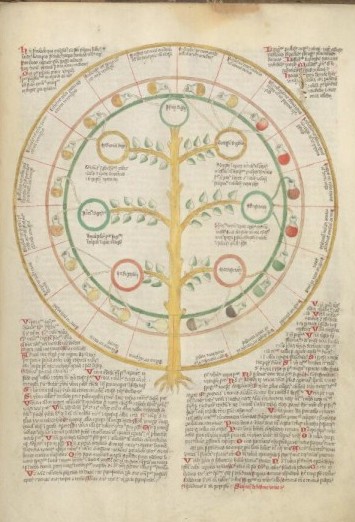 Better late than never, it’s Episode 9, wherein we hear Eberhard the German’s description of his own doomed conception, after a fashion, by which he introduces his handbook of Latin composition, the Laborintus.
Better late than never, it’s Episode 9, wherein we hear Eberhard the German’s description of his own doomed conception, after a fashion, by which he introduces his handbook of Latin composition, the Laborintus.
This episode’s text:
- Eberhard the German. “The Laborintus of Eberhard: Rendered into English with Introduction and Notes.” Trans. Evelyn Carson. Diss. Cornell University, 1930. Print.
Image: Wellcome Library, MS 49, fol. 42r. “Uroscopy Chart.”
Today, we continue with Thomas of Monmouth’s tales from the shrine of William of Norwich. This time, instead of miracle cures, we get an example of a miracle injury — in other words, a good old-fashioned smiting. On the way we get a visit from a sinister pig and learn that candles might be valued more than a life.
This episode’s texts:
- The Life and Miracles of St. William of Norwich, written by Thomas of Monmouth and translated by Augustus Jessopp and M.R. James. London: Cambridge: Cambridge UP, 1896. [Available on Google Books.]
- Blick, Sarah. “Votives, Images, Interaction and Pilgrimage to the Tomb and Shrine of St. Thomas Becket, Canterbury Cathedral.” [Available at academia.edu]
Image: British Library MS Stowe 17 (The Maastricht Hours), f. 82r.
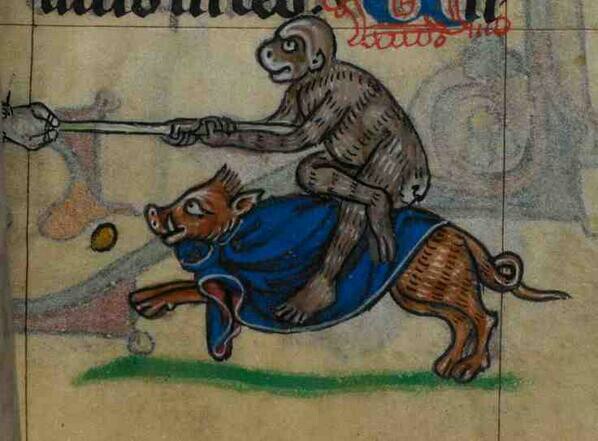
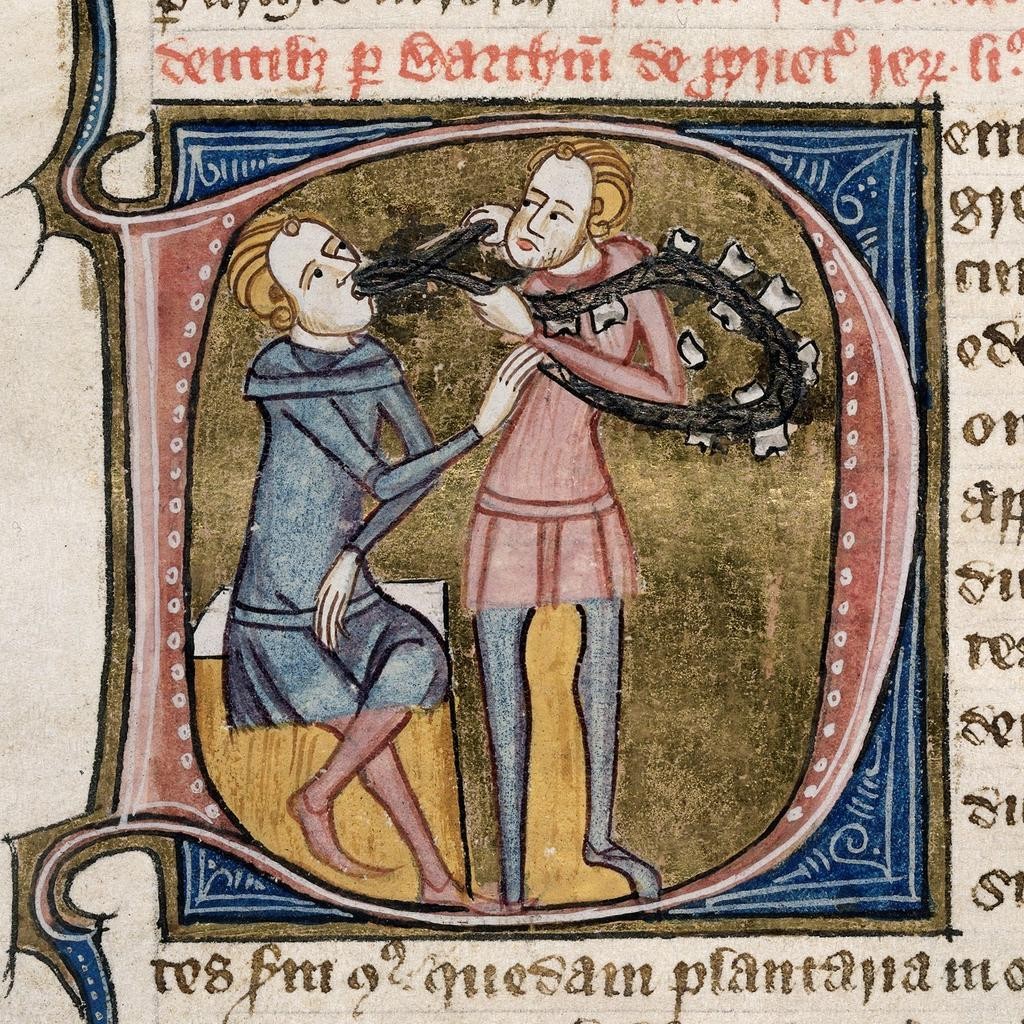 This episode we return to the The Life and Miracles of St. William of Norwich to look at three cases of cures for toothache, followed by a glance at some actual medieval dental treatments. Get those worms out of your teeth!
This episode we return to the The Life and Miracles of St. William of Norwich to look at three cases of cures for toothache, followed by a glance at some actual medieval dental treatments. Get those worms out of your teeth!
This episode’s texts:
- The Life and Miracles of St. William of Norwich, written by Thomas of Monmouth and translated by Augustus Jessopp and M.R. James. London: Cambridge: Cambridge UP, 1896. [Available on Google Books.]
- “Dental Treatment in Medieval England,” by T. Anderson (2004). Online at the British Dental Journal.
- The Anglo-Saxon Leech Book, as presented in a facing-page translation in Leechdoms, Wortcunning, and Starcraft of Early England, Vol. II. Edited by Oswald Cockayne. London: Longman, Green, Roberts, Longman, and Green, 1865. [Available on Google Books.]
Image: British Library MS Royal 6 E.VI, f. 503v.
Medieval Death Trip returns with the first episode of 2015, in which we take year-end retrospectives to the extreme and sample all the year 14s for each century covered by the Anglo-Saxon Chronicle, followed by a look at the great Cottonian Library Fire of 1731.
This episode’s selection is from:
The Anglo-Saxon Chronicle. Trans. E.E.C. Gomme. London: George Bell and Sons, 1909. [Available through Google Books.]
Further reading: Andrew Prescott, “‘Their Present Miserable State of Cremation’: the Restoration of the Cotton Library”
Image: “View of Ashburnham House, London, 1880” by Henry Dixon [via Wikimedia Commons]
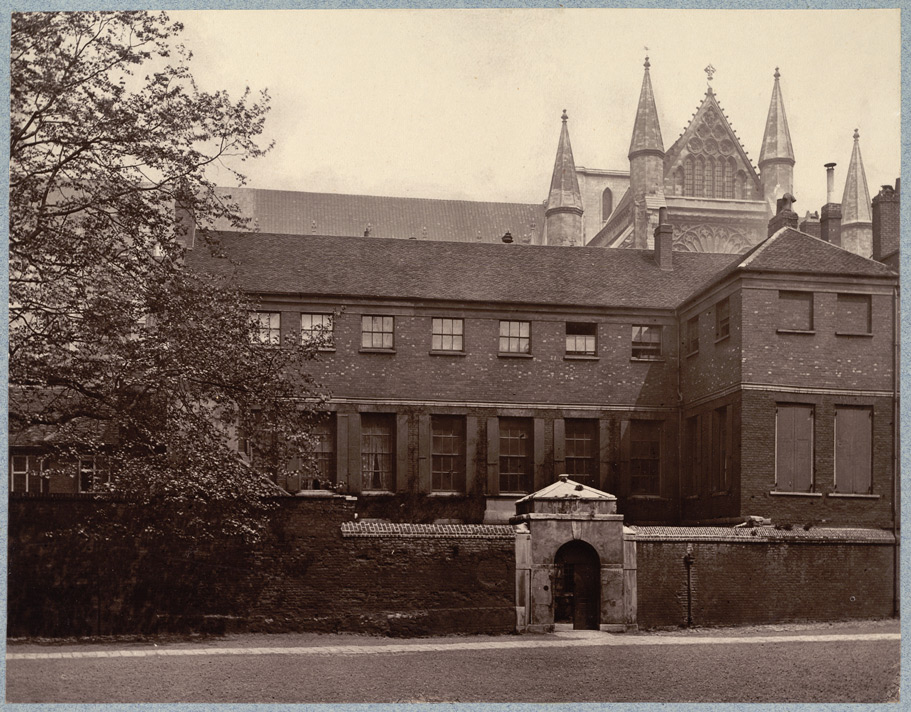
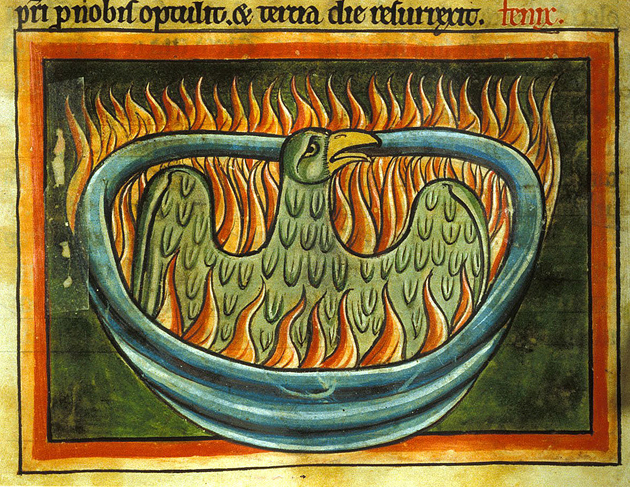 On this episode, we hear an account of the great Croyland (or Crowland) Abbey fire of 1091, purportedly written by the abbot at the time, Ingulf.
On this episode, we hear an account of the great Croyland (or Crowland) Abbey fire of 1091, purportedly written by the abbot at the time, Ingulf.
This episode’s selection is from:
Ingulf’s Chronicle of the Abbey of Croyland. Trans. Henry T. Riley. London: George Bell and Sons, 1908. Reprinted from London: Henry G. Bohn, 1854. (via
Google Books.)
 In this episode we continue with Eberhard the German’s Laborintus and learn how a teacher acquires the knowledge of grammar, along with getting some practical advice about inspiring medieval schoolchildren.
In this episode we continue with Eberhard the German’s Laborintus and learn how a teacher acquires the knowledge of grammar, along with getting some practical advice about inspiring medieval schoolchildren.







Recent Comments